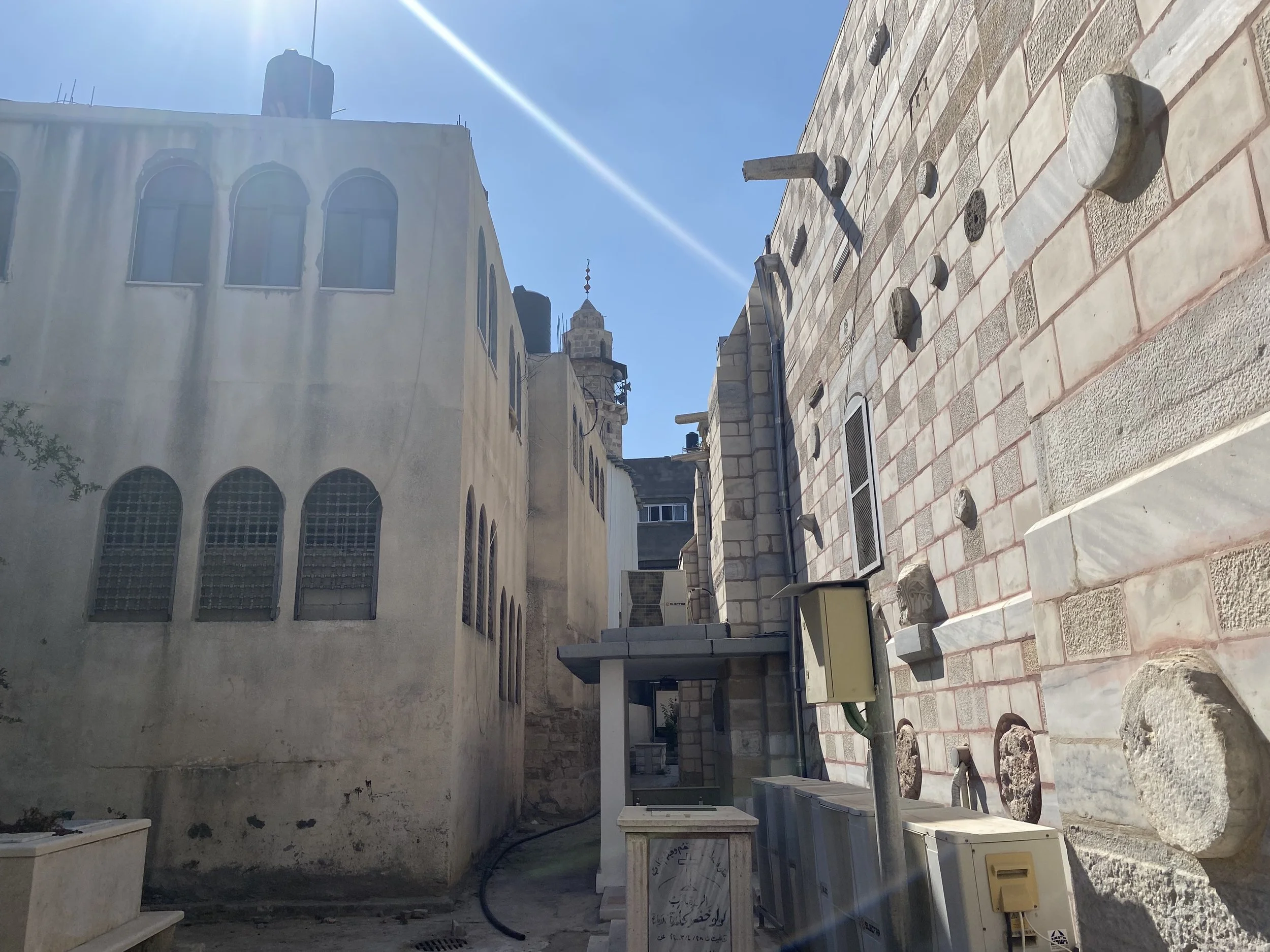Christians in Gaza: Serving through suffering
October 2023
On the evening of 19 October 2023, Saint Porphyrius Church in Gaza City – thought to be the third oldest church in the world – was damaged as a result of nearby shelling. A number of people were tragically killed and injured.
Here, Embrace’s Programmes & Partnerships Manager, Rhiannon, writes about her personal experience of the long and rich Christian history in Gaza that has been hidden behind the blockade for the past 16 years.
The bells on the ancient Saint Porphyrius Church
The Christian faith has a long history in Gaza, going back over 1,600 years. Although there are now only around 1,000 Christians left in the Gaza Strip, the Christian community continues to make a deep impact by serving those in need. Over the years, on my travels in Gaza, I have been confronted time and again with the sacrificial love of Christians for the surrounding community.
During the current Israel/Hamas war, the Orthodox and Latin churches in Gaza City have become places of refuge for those who need it, including for around 800 Christians, approximately 80% of the Christian population in Gaza.
On 19 October, those sheltering in the Orthodox church were packing up and distributing food parcels to their neighbours and other families who cannot flee the city. Later that evening, a missile landed close by, causing the hall where many were sleeping to collapse. Whole families died, and many were injured. Even churches like this one are no longer a safe place for people to shelter.
Exploring Gaza’s Christian history
In July 2023, I was a tourist in Gaza for the morning. There aren’t many people who get the privilege to visit and see the long and rich history that has been hidden behind the blockade for 16 years. George Antone from Caritas Jerusalem was my knowledgeable guide as we toured three churches. Two of them, the Latin and the Orthodox, continue to function as active Christian communities. The third church, the Byzantine church, is now a museum – and a reminder of the presence of Christians in this area over many centuries.
Rhiannon and George at the Byzantine church.
Although there are now only two functioning churches, they are part of the small but strong Christian community in Gaza. The Orthodox Church shares a boundary with the local mosque, and they are immensely proud that there is no wall to separate the two buildings. During my visit they told me that ‘this is the real Gaza’. Christians and Muslims are neighbours; they are one community; they wish to get on with their lives, provide for their families and practise their faith.
Standing in the old Christian cemetery at the back of the church, surrounded by buildings that once housed a bustling Christian community that is now largely gone, I noticed how much below ground level the church stands. The foundation stone of this church was first laid in 402 AD. The roots of Christians in Gaza go deep, as deep as the foundations of their church. Through all the changes and challenges that Gaza has faced, the Christian community has provided a consistent witness by serving those who are in need.
Outside St Porphyrius Church (right), with the mosque on the left.
‘Who will show Jesus to the people of Gaza?’
Later that same morning, while visiting George’s own church, the larger and newer Latin church, he reflected on his own decision to remain in Gaza. His words were: ‘If we go, who will show Jesus to the people of Gaza?’ In some ways, I envy this call that Christians in Gaza have on their lives to serve, but it reminded me that what Jesus called each of us to is not without cost.
The violence and war of the past few weeks has made the weight and cost of picking up their cross and following Jesus heavier than ever. Even so, they have remained committed to serving those around them. After the evacuation order of northern Gaza, issued by Israel on 13 October, I was not surprised when George sent me a WhatsApp which said: ‘We remain in the church and will never leave’.
George standing in Gaza City’s Latin church
Standing in solidarity with Christians in Gaza
The day after the tragedy on 19 October, George sent another message: ‘This is too much for human beings to live and carry.’ I reminded him, ‘this is why we are a body’. As they seek to remain and continue to serve their community, we can carry them in our prayers, we can share messages of solidarity and assure them that they are not forgotten. We can push back against polarising language and we can call for justice and accountability for all those who have been lost or who are suffering amidst this conflict.
In this time of challenge in Gaza, we too have a responsibility, as part of the one household of God, to help support our Christian sisters and brothers as they carry the heavy weight of the cross that they bear.
In response to the devastating events of 19 October, the Greek Patriarchate in Jerusalem said that ‘it will not abandon its religious and humanitarian duty.’ We too must not abandon our duty to use our own voices to support our brothers and sisters, ensuring that the living stones of Gaza are protected in order to fulfil this promise. Otherwise, there may be three church museums in Gaza for us to visit in the future.





